Table of Contents Show
Alaska has over 571,000 square miles of land and over 91,000 square miles of water. It’s by far the largest state in the country. But does that mean you have more places to camp? Not necessarily.
Alaska is also the most “wild” state in America, with over 57 million acres of designated wilderness. This means wildlife roam freely, which can make camping remotely more dangerous and illegal.
Let’s look at where you can camp in Alaska and a few tips to keep you safe!
Is Alaska a Good Place for Camping?
Many RVers plan a trip to Alaska at least once during their lifetime. It’s a bucket list adventure because of the spectacular scenery, abundant wildlife, and endless outdoor recreation.
There are tours and attractions that cater to tourists, as well as national parks and wilderness areas where Alaska’s natural, rugged beauty shines. For these reasons, the Last Frontier is an excellent place for camping.
Are There Full Hookup Campgrounds in Alaska?
However, if you prefer the resort-type lifestyle with an endless list of amenities, you may not enjoy camping in Alaska. Most campgrounds are only partially serviced or have no services. If your RV isn’t ideal for dry camping, you may struggle to find campsites.
You can find full hookup campgrounds in Alaska, but they’re few and far between. If you want to take a road trip across the state, visiting various national parks and cities, you probably aren’t going to find water, electricity, and sewer everywhere you go.
At many campgrounds, there isn’t a dump station or potable water. So, you’ll have to search for those necessities elsewhere.
Camping in Alaska is a more primitive experience. So it’s important that you travel prepared and plan in advance. You’ll find private campgrounds, municipal campgrounds, state park campgrounds, and park service campgrounds in Alaska, but limited amenities.
Is Boondocking Permitted in Alaska?
You can boondock in Alaska on public lands like in the Lower 48. However, there are fewer locations where camping is permitted.
If you travel through the Southwest, you may never stay in a campground due to the abundance of dispersed camping spots throughout Arizona, Utah, and Nevada.
However, because of the wildlife in Alaska, the state doesn’t permit overnight camping just anywhere.
It’s important to stop by the Alaska Public Lands information centers to get up-to-date information on where you can and can’t camp. You’ll find these resources in Fairbanks, Anchorage, and Tok.
Can You Camp Anywhere in Alaska?
Alaska is the largest state in the United States. Texas, Montana, and California could all fit inside Alaska.
So there is no shortage of public lands. But just like when you boondock in the Lower 48, you have to make sure you’re on public land that permits camping. Always obey posted signs, particularly private property signs.
You cannot just pull off the Taylor Highway and sleep for the night. First, it’s not safe. Second, it’s illegal. As mentioned earlier, visit one of the Alaska Public Lands information centers to make sure you stay safe and camp only in locations where overnight stays are allowed.
Keep in Mind: Before driving on the Taylor Highway in Alaska, here’s what you need to know
5 Tips for Safe Camping in Alaska
Camping in Alaska is unlike anywhere else in the United States. There are certain things to consider when choosing where to camp. So, here are five tips for safe camping.
1. Choose Your Campsite Carefully
If you aren’t going to stay in a designated campground, choose where you sleep carefully.
Wilderness camping may appeal to your adventurous spirit, but it may not be a good idea if you’re not a seasonal tent camper or RVer.
Families with younger kids may want to stay in a designated campground just for bear safety. If you need to make reservations, make them early. Campgrounds will fill up in the summer, so plan in advance if possible.
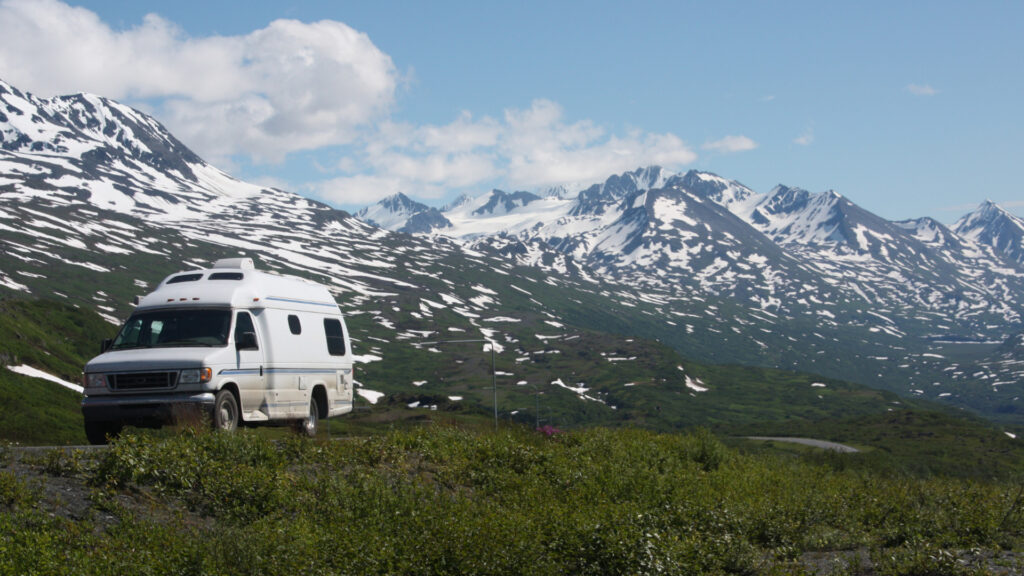
2. Understand Bear Safety
Understanding bear safety when camping in Alaska, even at designated campgrounds, is vital. If you’re going to do backcountry camping, don’t set up along rivers or streams where bears feed. No matter where you camp, keep your food properly stored.
If you’re tent camping, use bear-proof containers and burn any food scraps. In the unfortunate case that a bear appears near your campsite, make lots of noise so the bear is “surprised” and runs away.
Keep in Mind: Is the Alaskan Giant Polar Bear Real? Let’s dive in and see!
3. Be Prepared for Mosquitos
The mosquitos in Alaska are awful. If anyone has ever warned you about how big and how many mosquitos there are, they weren’t exaggerating. Pack high-quality repellent.
Keep your doors and windows closed. Wear lighter clothes since mosquitos are attracted to darker colors. You might also want to buy a few nets to wear over your face.
- DURABLE MATERIAL: Benvo mosquito head netting is made of 100% nylon, breathable fabric keeps you form mosquitoes and any...
- UPDATED BIGGER SIZE: 21.25 inch/ 54 cm in height, bottom perimeter is 37.8 inch/ 96 cm; top perimeter is 15.7 inch/ 40...
- Protects Against Mosquitoes for up to 6 Hours: Without any synthetic chemicals like DEET, you’ll have up to 6 hours of...
- Protects Against Ticks for up to 4 Hours: Our specially formulated spray provides protection against deer ticks for up...
4. Pack Layers and Waterproof Clothing
The weather in Alaska is unpredictable. Because of the changing elevations, the temperatures also vary. Wear layers so you’re ready for any temperature during the day as you’re out exploring.
Having a raincoat is also a good idea, especially if you’ve booked a tour or excursion. Unless the weather is hazardous, the trip likely won’t be canceled, so be prepared.
5. Follow Leave No Trace Principles
Finally, when camping and recreating, always follow the Leave No Trace principles. Properly dispose of your trash. Pick up after your pet. Stay on designated trails. Alaska is stunning. We want to keep it that way for future visitors.
When Is the Best Time for Camping in Alaska?
Many campgrounds don’t operate year-round. The peak season for camping in Alaska happens from June through September.
This is when most tourists visit the state, but it’s also when all of the amenities are available, tours are operating, and attractions are open. So, even though the crowds are larger, it’s the prime time to visit Alaska.
The longer daylight hours because of the summer solstice provide many more opportunities to explore the outdoors. You can hike, bike, fish, whitewater raft, and view wildlife for 18 hours a day if you want to!
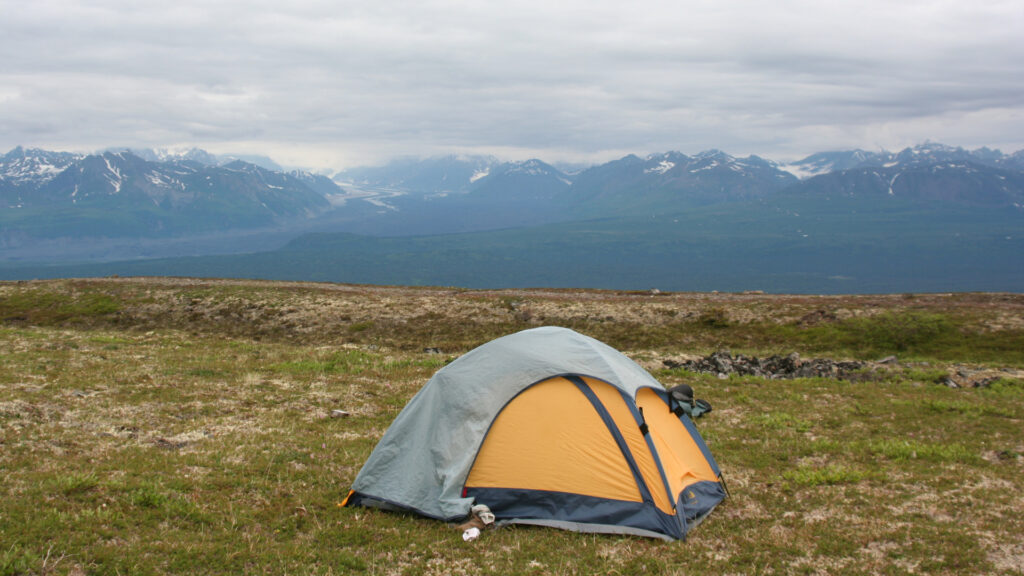
Camp Safely and Responsibly on Your Next Alaska Road Trip
Safety is of utmost importance in Alaska because of the abundant wildlife. It’s not just bears, either.
There are elk, moose, caribou, and other creatures that can disrupt your camping adventure. But as long as you take proper precautions, you’ll likely see these magnificent animals from a distance than digging in the trash at your campsite.
So, as you plan your Alaskan adventure, choose your camping locations wisely. Book reservations as far in advance as possible. And make sure you’re camping in locations where overnight parking is permitted.
Do you have any tips for successful camping in Alaska?
Last update on 2024-07-25 / Affiliate links / Images from Amazon Product Advertising API




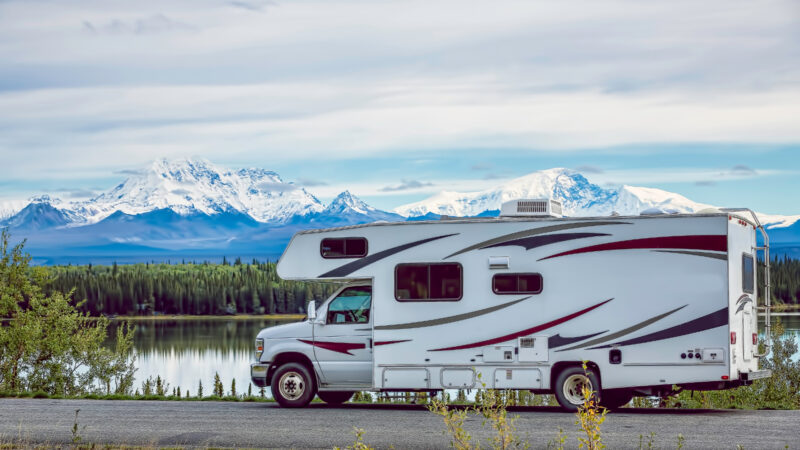

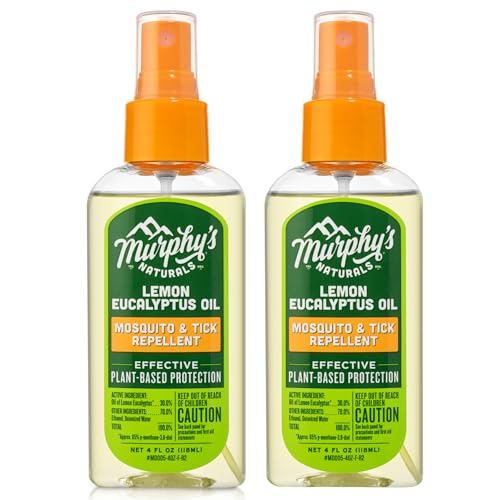

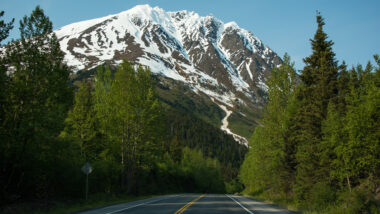
Great article! Yes! Keep your windows closed if you’re in bear country- the only thing that’s makes your hard sided rv protective is that a bear doesn’t want in it! I bought the top and bottom mosquito suit but only used the top. It was very helpful in the Yukon for those little black flies!